#ornithiscian
Text
Lunar New Year
happy #LunarNewYear #LunarNewYear2024 remember that it's not just the Chinese which celebrate new year 😉
here we have a selection of various dinosaurs and pterosaur named after loong since 2024 is the year of the loong!!!

#lunar new year#year of the dragon#lunar new year 2024#paleoart#palaeoart#digital artwork#digital illustration#id in alt text#dinosaur#pterosaur#ornithiscian
127 notes
·
View notes
Text

Parasaurolophus.
#dinovember#dinovember2022#art#digital art#illustration#paleo#palaeoblr#paleoart#prehistoric#reptile#archosaur#dino#dinosaur#dinosaurs#ornithiscian#hadrosaur#parasaurolophus#extinct#extinct animals#someone spilled pink sauce in the water oh god
242 notes
·
View notes
Text

genderqueer psittacosaurus !! <3
#psittacosaurus#psittacosaurus mongoliensis#ceratopsian#ornithiscian#dinosaur#dinosaurs#lgbt#lgbtq#lgbtq pride#genderqueer#genderqueer pride#pride#paleontology#paleoart#paleoblr#my art
50 notes
·
View notes
Text


IIIIIIIIIIT’S ARCHOVEMBER TIME
Day 1 is “your choice” and I chose Psittacosaurus!
~~~~~
I’ve long been fascinated by dinosaurs that we know the colors of and have been trying to draw all of them over the years. Psittacosaurus is very special because we know almost the full life appearance! Of one species, anyway… There are at least 11 species of Psittacosaurus, and it is one of the most completely known fossil genera due to the large sample size of specimens. First described in 1923, hundreds of individual specimens have been uncovered throughout Mongolia and Northern China, from tiny hatchlings to old adults. In 2001, a stolen fossil was discovered with almost perfectly preserved integument. It’s body was covered in scales in irregular patterns. Hollow, tubular bristle-like structures were arranged in a row down the dorsal line of the tail. In 2016, a study was published on the examination of the melanosomes in the Psittacosaurus’ skin. It was discovered to be countershaded: reddish-brown on top with a creamy underbelly. Darker clusters of pigment were found around its face, shoulders, and cloaca, which were likely used for display. It also had large patagia on its hind legs. This specimen has not yet been assigned to a particular species, but it’s what I have drawn here.
~~~~~
Psittacosaurus’ were small, early ceratopsians from Early Cretaceous Asia. One of the largest was P. mongoliensis, which would have reached 2 metres (6.5 ft) in length, and most other species are around that size as well, though there are some which were slightly smaller. Due to the proportions and relative size of Psittacosaurus’ brains, they likely had complex social behaviors. They also had well-developed senses of smell and vision. The size of their scleral rings indicate they may have been cathemeral: active at irregular intervals during both the day and night. They likely had a nut and seed-rich diet which they would have used their strong beaks to crack, and would have swallowed gastroliths to help them wear down their food.
~~~~~
Also, because I’ve noticed that the size chart I make at the end of Archovember is always much more popular than the individual pieces, I’ve decided to make a size chart for each species I draw. 🙃 Yep. I’m drawing two images per prompt. 🙃🙃 Because I love making extra work for myself. 🙃🙃🙃
Anyway, I hope you all enjoy and for those who may be joining in: remember to have fun! Don’t be like me! 🙃🙃🙃🙃
#my art#Psittacosaurus#Ceratopsian#Ornithiscian#dinosaurs#archosaurs#archosauromorphs#SaritaDrawsPalaeo#Archovember#Archovember2022#DrawDinovember#DrawDinovember2022#Dinovember#Dinovember2022
126 notes
·
View notes
Text
Day 9: Almost Dinos
Today's competitors are very, very closely related to dinosaurs...so much in fact, that both were thought to be dinosaurs for a while.
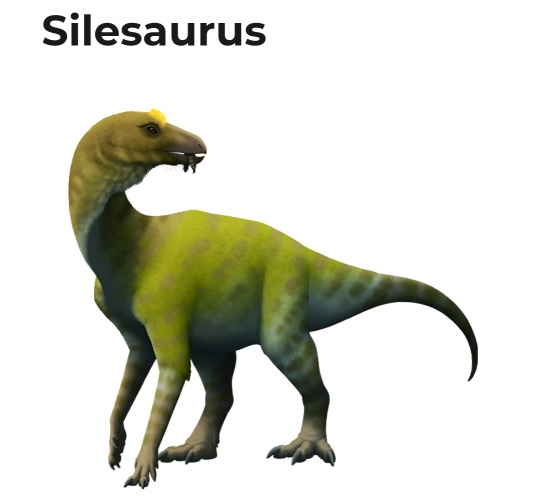
Why isn't Silesaurus a dinosaur?
1.) Lacks an elongated deltopectoral crest (ridge on the humorus for muscle attachment).
2.) Lacks epipophyses on cervical verts (parts that branch off the vertebra)
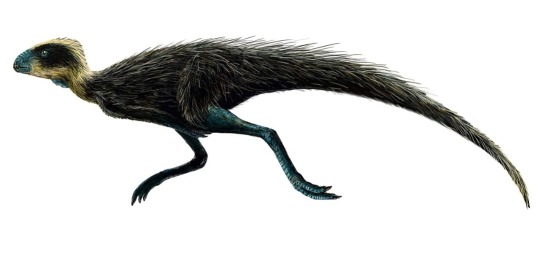
Pisanosaurus, not a dino? This little guy is still under hot debate. It could be a transitional form between silesaurids and basal ornithischians OR is could be a basal ornithiscian. More data is needed.
REBLOG for SILESAURUS
LIKE for PISANOSAURUS
37 notes
·
View notes
Note
may I know about paleobiology? (also what's the difference between it and paleontology)
The difference isn't extremely clear but paleobiology is a school OF paleontological study that specifies the study of ancient life and its functions- which is different from paleogeology and paleoanthropology, and is a category that contains paleobotany as well (specifically ancient plants). So here are some of my favorite assorted paleobiological facts (+ a bonus paleogeological one!)
Dinosaurs are separated into two groups based on the structure of their pelvises- Ornithiscians (bird hipped) and Sauriscians (lizard hipped). In what I believe to be the funniest oversight in the entire study, modern manoraptors, i.e. birds, are Sauriscians.
In a fairly recent dig, evidence of a larynx was found among fossils in the family ankylosauridae. This implies that at least Ankylosauridae, but more than likely many OTHER dinosaurs, were capable of complex calls in the same manner birds are. This was already commonly theorized, but this proof is very exciting!
Ginkgo trees are some of the oldest trees still living on our planet, and have remained largely unchanged since they first arrived around 290 million years ago.
A slightly gross to some, but super informative fossil is known as Coprolite- fossilized feces, essentially. They're a great insight into what it is ancient creatures ate!
Bonus paleogeological fact! The appalachain mountains are around 480 million years old... which makes them older than the first known vertebrates! That's an ancient mountain...
#austinwehaveaproblem#ask#ty so much for you interest !!!#yall are also allowed to infodump in my ask box idm
13 notes
·
View notes
Note
I hope this doesn't come across as confrontational, but I've seen you say that birds are descended from non-avian dinosaurs twice now, which seems wrong to me. Aren't non-avian dinosaurs, by definition, the ones who *didn't* evolve into modern birds? You might be getting it mixed up with the nomenclature of saurischians ("lizard-hipped") and ornithiscians ("bird-hipped"), which were named early on in the history of paleontology and have since become very misleading.
Ah, my apologies if that's confusing!
By "non-avian dinosaur," I mean those dinosaurs that are not birds. I'm using it as a way to avoid saying "birds are descended from dinosaurs" since birds are still dinosaurs! "Non-avian dinosaur" is just a pretentious term that we herpetologists use to make the distinction between those dinosaurs that are extinct and those that are birds.
98 notes
·
View notes
Text
2023 Reading Log, pt 1
It begins again! With a straggler from 2022.
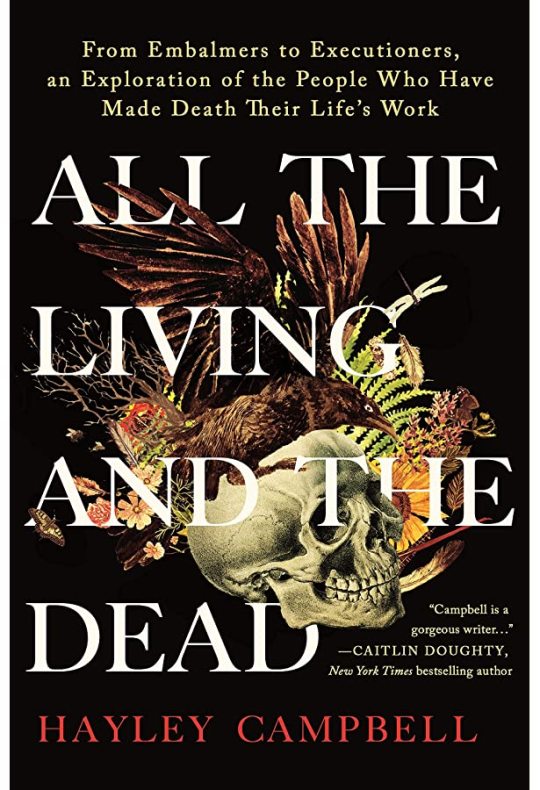
151. All the Living and the Dead by Hayley Campbell. Last year, the book that made me cry was Women and Other Monsters. This was the book this year. This book is about the author’s grappling with death via the act of visiting and interviewing people who work in fields handling the dead. Morticians, grave diggers, autopsy technicians and cremation operators are interviewed, as are people who you might not think of—crime scene cleaners, a company that works in PR and cleanup for disasters, a bereavement midwife. The material about the death of fetuses and infants is especially devastating, both for me and for the author; her sense of detachment is derailed upon seeing infant corpses being cleaned after autopsy, and coming to terms with that is a major theme of the book. The book ends with the COVID pandemic, and how death has become a much bigger part of everyone’s lives, after decades of denial pushing it to the fringes. This was a powerful read, and I have a lot of emotions about it; I’m glad I read this book, but I will likely never want to read it again.

001. Upstate Cauldron: Eccentric Spiritual Movements in Early New York State by Joscelyn Goodwin. This was not the book I thought it was going to be when I picked it up. It covers most of the bases—looking at the “Burnt Over” region of Upstate New York and how it was the site of a lot of religious development throughout the 19th century. It covers the well known ones—the Millerites and their more successful spinoffs, the Jehovah’s Witnesses and the Seventh Day Adventists, the Mormons, the Spiritualists. It also talks about the interweaving of spiritualist beliefs with leftist politics in the 19th century, and how people like Susan B. Anthony and Fredrick Douglass had connections to séances and channelers. What I did not expect was the strong bias of the author. He is clearly friendly to Helena Blavatsky and Theosophical ideas, much more than an impartial historian would have been of that notorious fraud. The final chapter, where the author lays out his Neoplatonic philosophy and his belief that New York State is the site of ley lines, reads like the reveal in a horror movie. There is useful information to be had here, but it should be taken with more than a grain of salt.
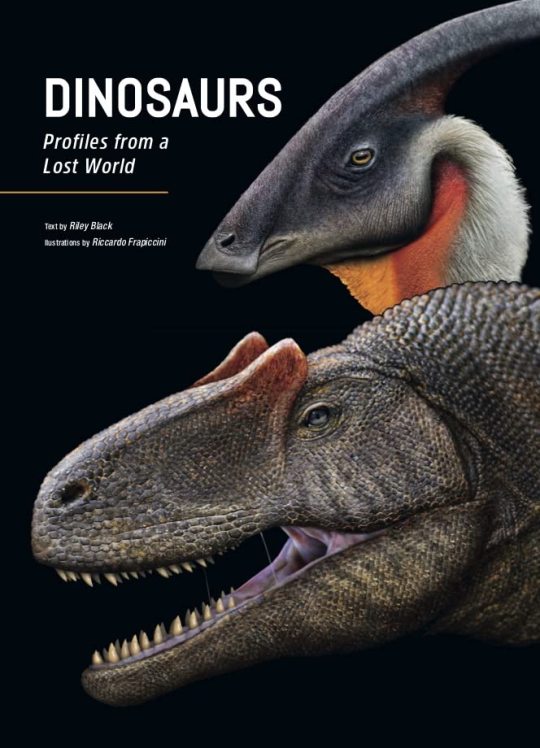
002. Dinosaurs: Profiles from a Lost World by Riley Black, illustrations by Riccardo Frapiccini. The author of this book is on tumblr! Go follow her @rileycatrocks , she’s awesome. This book is an overview of what we know about notable dinosaur genera, as well as other Mesozoic reptiles like pterosaurs and crocodiles. The writing is good at summarizing modern research in a readable style; this is a good book for interested laypeople. The art is done using photomanipulation to create the textures on the animals, all of which are featured in a profile head shot. I think it works mostly, but there are some issues. I really like the animals’ eyes, which feel authentic (I especially like the horizontal pupils on many of the ornithiscians). The textures are more hit-and-miss, though. The same sample of monitor lizard skin is used on multiple pieces, and there’s a Brachiosaurus covered in Galapagos tortoise hide that looks really awkward and misshapen. This book was published first in Italy, so I’m a little surprised European dinosaurs don’t get more featured. Although the somewhat obscure and very strange Italian pterosaur Caviramus shows up, which I appreciated.

003. The Language of Food: A Linguist Reads the Menu by Dan Jurafsky. This book is part food history and part computational linguistics. The book discusses both how foods travel around the world and change when they meet new cultures (like how ketchup was first made with fish, and how much of English and American foodways come from the Middle East). It also covers the linguistic tricks used on menus and food packaging to sell to specific markets, and the similarities in language used on Yelp reviews. These two halves don’t quite gel together the way the author may have hoped. I liked the book, but maybe it could have used a little more scaffolding.
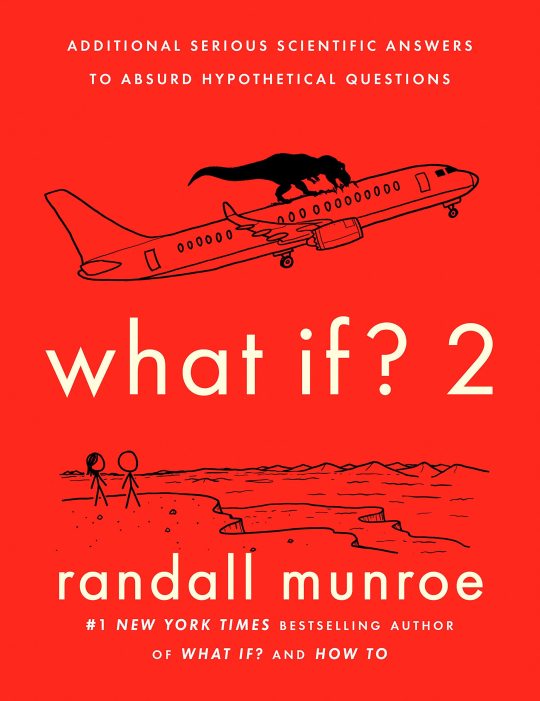
004. what if? 2 by Randall Munroe. This was the hardest I’ve laughed at a book in some time. Highly recommended for the joy factor alone. This is the third of Munroe’s pop-science Q&A books, and like what if? and how to?, it answers questions, some simple, some absurd, with the science of how they would actually work. A lot of planets are destroyed, black holes created, and other chaos ensues. Most of the questions involve physics or chemistry, but there are a few biology questions included (like how many people would a T. rex have to eat in a day, which becomes how many T. rexes can be supported by a single McDonalds).
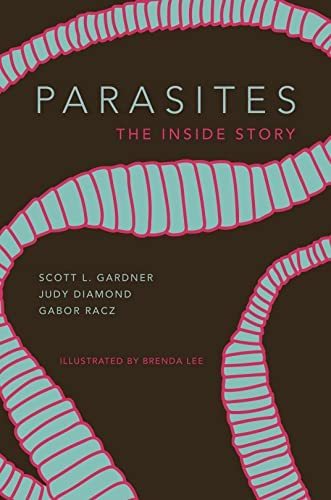
005. Parasites: The Inside Story by Scott L. Gardner, Judy Diamond and Gabor Racz, illustrated by Brenda Lee. This book is another “recommended for interested laypeople” text, this one about the evolution and ecology of parasites. The book is divided into thirds; the first third covers parasites of humans, the second the life histories and evolution of major clades of parasites, the third individual case studies, most of them involving the first author. The illustrations are a high point—the life cycles of featured parasites are illustrated, and the back of the book has a spotter’s guide to the individual species discussed in the text. I wish it were longer, though—this book is 190 pages, which includes a 10 page glossary and 40 pages of bibliography.
#reading log#lot of emotions in this one#parasite#parasitology#evolution#ecology#pop science#xkcd#linguistics#food history#death#funeral industry#dinosaurs#paleontology#paleoart#comparative religion#occultism#new york state#american history
23 notes
·
View notes
Note
Top 5 ornithiscian
5. stegosaurs
4. ankylosaurs
3. hadrosaurs
2. iguanodon
1. ceratops
5 notes
·
View notes
Text
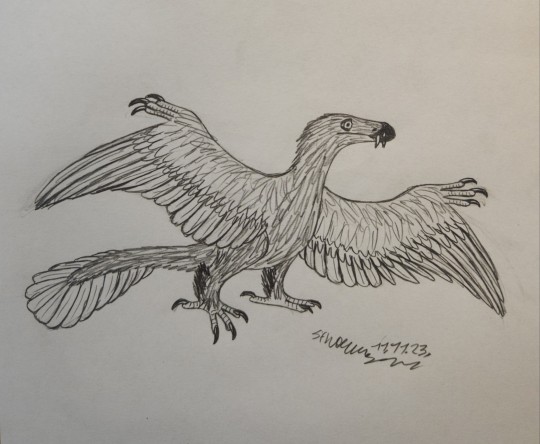
Ornithiscian "bird"
A funny spec evo idea i had in mind
0 notes
Text

Psittacosaurus mongoliensis
#dinosaur#dinosaurs#paleoart#paleontology#art#ornithiscian#Psittacosaurus#mongoliensis#Psittacosaurus mongoliensis#we know his butthole :)#august 14th 2021
368 notes
·
View notes
Video
youtube
The horned dinosaurs are now so numerous that just about any arrangement of spires, scallops, notches, and whorls are hypothetically conceivable. One such horned face is not what it seems and is a Frankenstein-ian monster composed of spare parts. This chimera has remained in the paleontological zeitgeist for over a hundred years despite its anachronisms due to its commanding presence and role in the 1925 blockbuster The Lost World. Fending off carnivorous foe left and right with a crown of thorns, two eyebrow knives, and a snout lance, meet the heavily armored and rotund Agathaumas, the horned dragon that never was.
#agathaumas#ceratopsians#triceratops#dinosaurs#ornithiscian#paleontology#paleoart#natural history#science#scicomm#science communication#fossils
69 notes
·
View notes
Text
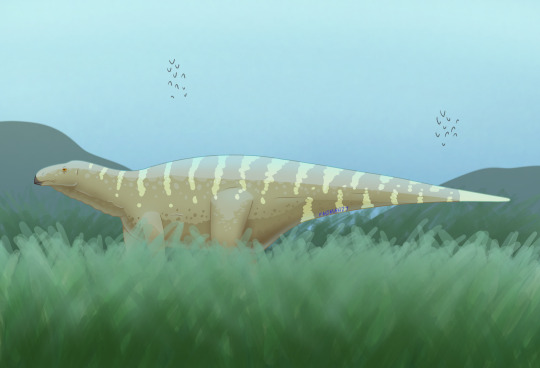
Iguanodon.
#dinovember#dinovember2022#art#digital art#illustration#paleo#palaeoblr#paleoart#prehistoric#reptile#archosaur#dino#dinosaur#dinosaurs#ornithiscian#ornithopod#iguanodont#iguanodon#extinct#extinct animals#rare footage of me going outside and touching grass
157 notes
·
View notes
Text
Edmontosaurus now be like
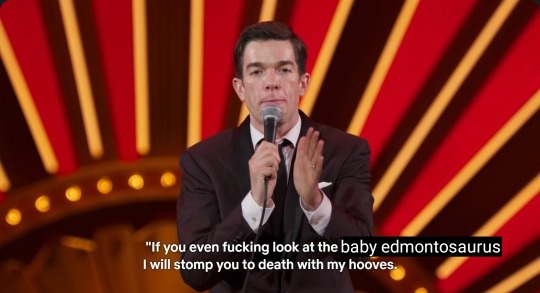
#edmontosaurus#palaeo#palaeoblr#palaeontology#palaeoart#palaeo meme#palaeontology memes#palaeontology meme#palaeo memes#dinosaur#ornithiscian#mesozoic#jurassic#cretaceous#triassic#hadrosaur#palaeofail
403 notes
·
View notes
Photo
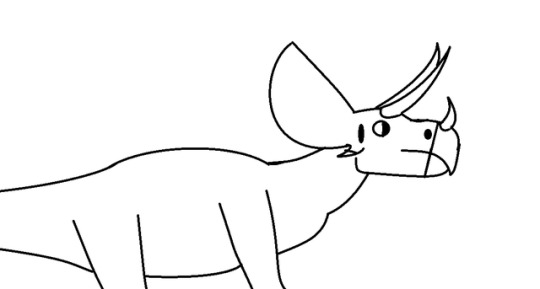
Triceratops - Base
1 note
·
View note
Photo

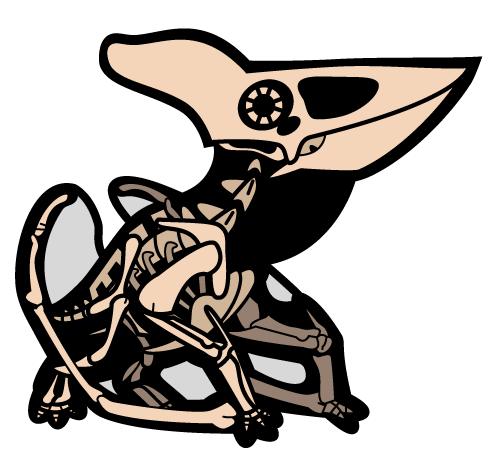

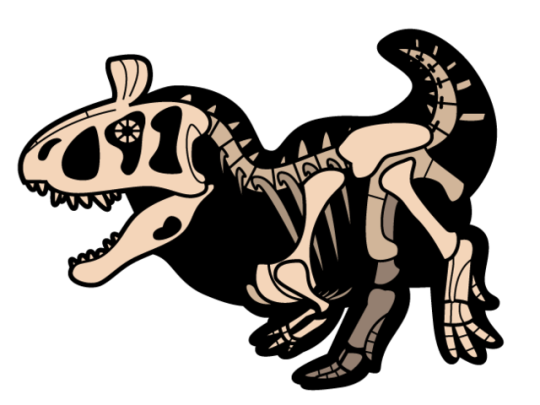
Some stickers available on my redbubble!
#triceratops#skeletal#skeleton#fossil#dinosaur#dino#sticker#pterosaur#pteranodon#cryolophosaurus#therapod#ceratopsian#saurischian#ornithiscian#nasutoceratops
2K notes
·
View notes